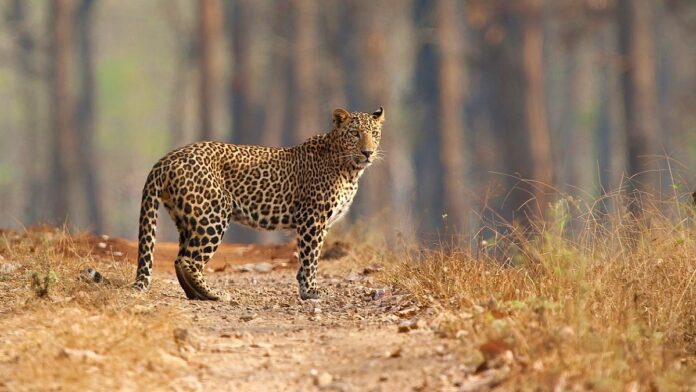New Delhi, February 29: Prime Minister Narendra Modi expressed jubilation over the notable increase in India’s leopard population, commending the nation’s steadfast dedication to biodiversity preservation. The surge in leopard numbers, revealed in a recent report, prompted PM Modi to extend his appreciation towards all stakeholders contributing to wildlife protection efforts.
PM Modi’s endorsement gains significance against the backdrop of his consistent advocacy for international collaboration in safeguarding biodiversity. Repeatedly emphasizing the need for global initiatives in various international forums, he underscored India’s sincere commitment to biodiversity conservation, reaffirmed by the recent spike in leopard population.
The Cabinet decision on the establishment of the International Big Cat Alliance, headquartered in India, marks a major step towards conserving our majestic big cats and their habitats, and also reinforcing India's leadership in global biodiversity conservation.… https://t.co/iRVQLQJQyw
— Narendra Modi (@narendramodi) February 29, 2024
According to a report released by the Minister for Environment, Forest and Climate Change, Bhupender Yadav, India’s leopard population has risen to 13,874, with a range of 12,616 to 15,132 individuals. The report, titled ‘Status of Leopards,’ outlines regional variations, indicating a stable or slightly growing population in Central India, contrasting with a decline in the Shivalik hills and Gangetic plains.
Detailing the findings, the report highlighted a 1.08% per annum growth in sampled areas across India from 2018 to 2022. Notably, Central India and the Eastern Ghats exhibited the largest growth rates at 1.5% per annum, while the Shivalik hills and Gangetic plains experienced a decline of 3.4% annually.
The fifth cycle of leopard population estimation in 2022 focused on forested habitats within 18 tiger states, covering four major tiger conservation landscapes. This initiative, an extension of ‘Project Tiger’s’ conservation legacy, underscores broader species protection efforts beyond tigers.
The rise in leopard numbers reflects India’s multifaceted approach to wildlife conservation, emphasizing the significance of collaborative efforts in ensuring the sustainable coexistence of diverse species within its ecosystem.
With the latest report highlighting positive trends in leopard population, India stands poised to further bolster its conservation endeavors, fostering a harmonious balance between human activities and wildlife habitats.
Read more: Indian Scientists Develop Eco-Friendly Wound Dressing Using Banana Fibres in Assam









